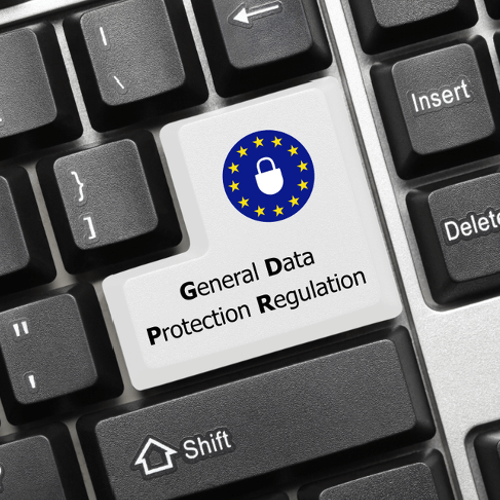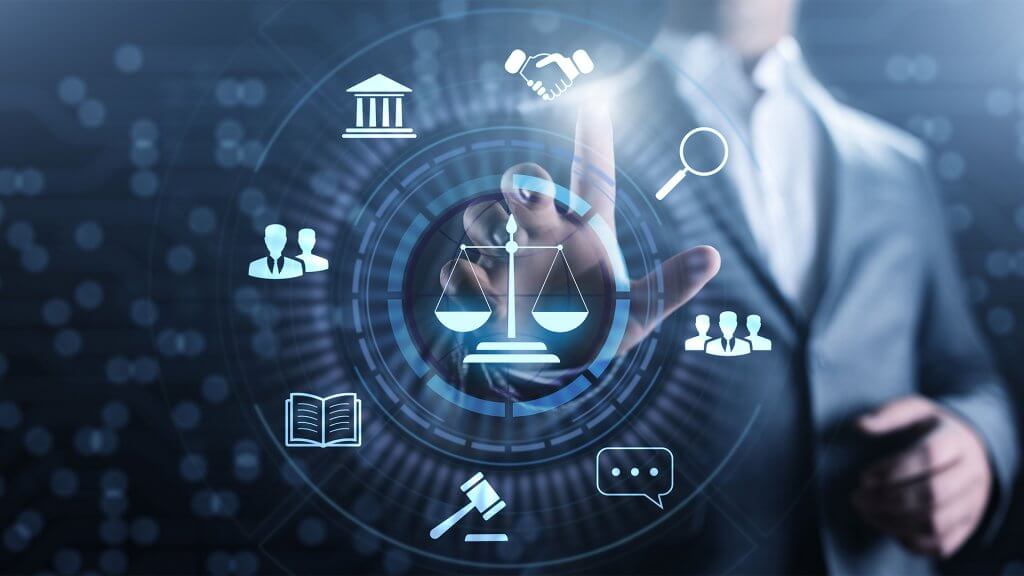Many think that law enforcement transcription is another small, inconsequential cog in the American Criminal Justice System. It’s a requirement in certain instances, optional in others, and, in some cases, can completely be eschewed. However, many fail to realize how much law enforcement agencies benefit from outsourcing their transcription projects. From committee meetings to patrol reports to interviews, getting the right transcription provider can help create a more reliable, more efficient workflow, freeing up more time to focus on more important things. In this article, we’ll discuss the most crucial benefits of utilizing a law enforcement transcription services provider.
But first, let’s cover other considerations for choosing the right option for your agency.
Outsource or in-house?
One of the first things you need to consider is whether you’ll establish an in-house transcription department for your agency. While it makes sense in specific contexts — especially if the agency or department in question has a ton of resources and time to put one up — an overwhelming majority of situations can benefit from outsourcing transcription needs.
Transcription providers offer focused, specialized services for different industries. Reputable service providers hire skilled US based transcriptionists in order to be CJIS compliant. Transcription providers offer training, equipment, salaries, and benefits and take care of the daily HR requirements, freeing up precious time and resources for law enforcement agencies.
Human or automated?
Automated tools, speech-to-text programs, and AI-powered transcription services have become popular in recent years. This is not surprising, given the slew of benefits it provides. It’s fast, usually free or at least cheap, and can be done by anyone with a computer, an internet connection, and a basic understanding of how websites work.
But it has its downsides. And to underline those downsides, I did a quick experiment. I activated the free voice-to-text service in my word-processing program and read out the paragraph above. In the interest of fairness, I read it as clearly as possible in my regular American accent. I spoke at a regular pace and enunciated every word correctly. I have a decent headphone and mic unit, an almost new Logitech G733. I ensured the room was quiet, except for maybe the quiet hum of my A/C unit, but that’s low enough that it shouldn’t affect the outcome. This is the result:
Automated tools speech-to-text parents an ai-powered transcription service sub become popular in recent years this is not surprising given the slope benefits it provides it’s fast usually free or at least cheap and can be done by anyone with the computer and internet connection and a basic understanding of how websites work
Errors, errors everywhere
As you can see, there are notable issues with the AI generated transcription. Despite pausing at the end of sentences, the speech-to-text software failed to register or put in periods. There are also no commas.
Also, notice the “services have become” from the original paragraph becoming “service sub become” on the transcript. Same for “slew of” into “slope.” This is an example of elision — blending syllables in words or phrases in spoken language. Humans have an ear for these kinds of things and can easily distinguish the correct word through contextual understanding. However, the automated transcription software failed to pick it up and instead went with the closest-sounding words.
This is just an example of a single speaker. Imagine letting a speech-to-text program go up against an audio or video recording with multiple speakers.
Aside from this very evident example, automated transcription also has trouble with different phonetic pronunciations, accents, figures of speech, and the like. These are issues that you, the user, must then fix. Automation may cut down on time compared to doing the transcription yourself, but it still isn’t an ideal arrangement.
Now, some of you might be thinking that this is paper-thin evidence. I could have deliberately fumbled my pronunciation. I could have spoken softer or faster to tip the results in favor of the point that I’m making. I wanted to preserve the integrity of the test, so obviously, I didn’t do it. But it’s good to doubt and double-check facts.
Fortunately, AI’s notorious inaccuracy isn’t something I’m claiming without evidence. Leading AI transcription tools can only reach up to 86% accuracy rates – on average.
Human transcription for accuracy
Human transcription is slower, but that’s the tradeoff for being more accurate. Getting a service provider means getting the transcripts after editing, proofreading, and whatever accuracy checks they offer. Some providers also provide customization options, allowing for different formats and things like closed captions and speaker titles. Then there’s their accuracy guarantee, with some offering 99% or more. This is important because incorrect transcription in law enforcement matters can have massive consequences, altering decisions and judgments in the most detrimental ways possible.
Now that’s out of the way, let’s move on to the reasons why you should get a reputable law enforcement transcription service provider.
Reason 1: Saves on resources
The costs of getting a transcription service provider are negligible compared to creating your own transcription department over the long run. As mentioned above, there’s no need to spend money on salaries, benefits, training, equipment, and the rest of the things required to onboard in-house transcriptionists.
Here’s a quick overview of prices on offer for transcription providers:
Regular transcription requests (those that are processed and completed within a week) may range from $1.75 to $3.00 per audio minute. Rush orders may start from $2.25 to $5.00, depending on how quickly you need them back. Law enforcement agencies willing to extend the waiting time to two weeks will get more savings out of the deal.
It’s also important to find a transcription provider that balances affordability, accuracy, and quality. Unfortunately, a few companies entice customers with dirt-cheap prices only to deliver dirt-cheap transcripts that require extensive error correction and editing. That constitutes a waste of money and time, bringing us to the next reason. Having better customer experience management when delivering transcription services will make it more likely for your customers to continue working with you.
Reason 2: Efficiency and time
One of the most obvious benefits of transcription is how much time it can save agencies. This can materialize in two distinct ways.
First, there’s no need to hire new people. No need for training and new equipment. No need to lay out new operational policies. There is no need to take time onboarding and incorporating new hires into an efficient and functional department. I know this benefit’s been mentioned at least twice, but it bears repeating. Furthermore, it neatly emphasizes how these benefits cross over each other, providing an almost exponential gain for law enforcement agencies.
Secondly, transcription service providers offer considerably quick turnaround times; they’re incentivized to do so since that’s one of their main selling points. Most providers can finish, edit, proofread, and prepare a transcript as per client specifications within 24 hours.
The timeline can fit neatly with any agency’s workflow, making things run smoothly and freeing up time and effort for more important tasks.
Reason 3: Accessibility
One of the best benefits of transcripts is ease of access — that is, it can be opened on any device at any time. Several transcription service providers allow their law enforcement clients access to their online portals, where they can upload recordings and receive transcripts. Get a good transcription provider, and you’ll have access to your files quickly and securely (more on that later). No muss, no fuss; just upload your recording, and the transcript will be sent to you shortly.
This is great for law enforcement personnel like police officers, detectives, and investigators who need quick access to essential recordings during their duties. Just open the portal on any internet-connected device, and that’s it.
Here’s another thing to discuss — recordings can be a pain to watch. Hours upon hours of body cam footage, interviews, interrogations, departmental meetings, the list goes on and on. And sometimes, having to sit there and watch all those while looking for a specific exchange, a mentioned phrase, or even one word crucial for an investigation can sap the will of even the most patient detectives. Transcripts turn those videos and audio into digitally searchable files for easy access. Just press control plus the letter f on your keyboard, type the word, and there it goes.
Reason 4: Security
As promised, we shall now discuss the aspect of security when it comes to outsourced transcription. Many of you might wonder how that’s possible since outsourcing itself presents a security risk. Well, here’s how: security compliance.
Information is considered a top asset in the criminal justice System. Everything from personal information from routine traffic stops to essential details that the federal government uses to build cases is and should be treated with the same level of security. CJIS, or Criminal Justice Information System, enforces strict requirements for the security of important data. CJIS is the largest branch of the Federal Bureau of Investigation that handles all databases and information exchange within the many law enforcement agencies around the country.
Law enforcement agencies have been known to enlist third-party transcription service providers (hence why we’re even discussing the topic), so the FBI’s CJIS division developed a 13-part policy that every provider must meet to earn compliance.
Here they are:
- Information Exchange Agreements
- Security Awareness Training
- Incident Response
- Auditing and Accountability
- Access Control
- Identification and Authentication
- Configuration Management
- Media Protection
- Physical Protection
- System and Communications Protection and Information Integrity
- Formal Audits
- Personal Security
- Mobile Devices Oversight
Implementation of these policies will cost the service provider a pretty penny. Still, you can’t put a price on security — especially with how sensitive some of the data our police officers access daily.
Closing remarks
Law enforcement agencies must consider many factors when outsourcing their transcription services. Aside from that, there are many, many options available for every need. Take your time in considering these elements, but make sure to keep what we’ve talked about in mind.





















